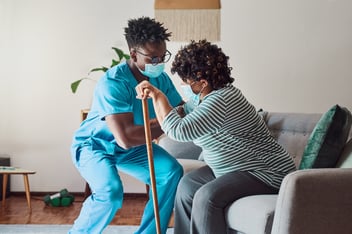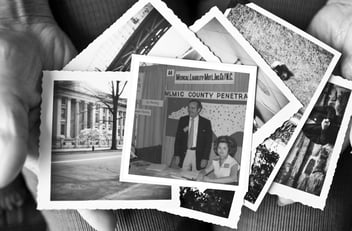How Practices Should Prepare for an Active Shooter Situation

In light of Dr. Mauck's murder, it's important that we not only mourn and remember the loss of a fellow physician's life, but also make the changes necessary to prevent further tragedy within the community. And while we may wish to avoid the thought of an active shooter situation, when faced with the unthinkable, nothing is more valuable to a medical practice than preparation.
Be Prepared
Medical facilities are often particularly vulnerable to active shooter situations, as both patients and staff are unable to defend themselves while confined to rooms without locks.
Fear, anxiety, and disbelief are natural reactions to this traumatic event, which can often cloud judgement or stifle reactions in a state of panic. The only way to combat this innate response is preparation. We strongly recommend that medical practices work alongside their local police, EMS, and fire company to develop an active shooter plan as part of their emergency response plan. This plan should state overarching goals and objectives while clearly defining a course of action. Here are some steps to consider:
- Provide safety training: During an active shooter event there may be noise from alarms, gunfire and explosions, and people shouting and screaming. Effective training provides practice staff with the means to regain composure, recall at least some of what has been learned, and commit to action. Training for personnel can focus on the easy-to-remember mantra of “Run, Hide, Fight.” Everyone should be trained first to run away from the shooter, if possible, encouraging others to follow. If that is not possible, they should seek a secure place to hide and deny the shooter access. As a last resort, each person must consider whether he or she can and will fight to survive, incapacitate the shooter, and protect others from harm.
- Establish response protocol for workplace violence: Active shooter events in outpatient healthcare facilities are relatively rare, but workplace violence incidents are still prevalent. As you develop an Emergency Response Plan for your practice, include information and training on how staff should best handle one of these events. There is no one prescribed method to handle an incident, however, planning ahead will help you make the best choice during an active shooter situation. The best way to save lives is to get potential targets away from the shooter. Difficult choices will need to happen.
- Educate staff on the evacuation plan: Personnel, patients and visitors who can evacuate safely should do so. Recent research shows that the best method to reduce loss of life in active shooter incidents is for people to immediately evacuate from the area where an active shooter may be located or attempting to enter. How a healthcare provider responds during an active shooter incident will be an intensely personal choice that may be influenced by moral, ethical, religious, professional, or other values, however healthcare providers are not obligated to stay and help patients or staff during an active shooter situation.
By following these three principles, practice leaders can help employees better prepare, respond, and recover from an active shooter situation, trusting that staff will rely on their training and knowledge to make quick decisions in the face of danger. To learn more about how to prepare for an active shooter situation, we invite you to click here to watch our recent webinar, "Surviving an Active Shooter." If you would like more information about how you can help prepare your staff, reach out to a member of our Curi Advisory team at 800-662-7917
About the Author










Comments